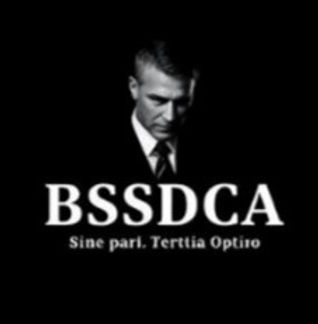What’s in Advocare’s “Spark”???
- Dennis Gerencher
- Nov 22, 2013
- 4 min read
It’s been said a number of times that Advocare products are “all natural”; especially so of “Spark”, their flagship product. With its inclusion of sucralose, there is no way that Spark can be all natural. Tate & Lyle manufactures sucralose at a plant in Jurong, Singapore by a process involving the chlorination of table sugar with a chlorinating agent such as phosphorus oxychloride. Aside from that, let’s take a look at some of the key ingredients in Spark and just how “natural” they are.
Thiamine (as HCI), Vitamin B1, Thiamin is made from Grewe diamine (a coal tar derivative) processed with ammonia and other chemicals. Thiamin hydrochloride (HCL) is not naturally found in food or the body (thiamin pyrophosphate is the predominant form in the body). An animal study found that a natural food complex vitamin B1 was absorbed 1.38 times more into the blood and was retained 1.27 times more in the liver than thiamin hydrochloride (Schmid F, Christeller S, Rehm W. Studies on the state of vitamins B1, B2 and B6 in Down’s syndrome. Fortschr Med 1975;93(25):1170-1172).
Riboflavin, Can be made using a number of biotechnological processes. Different microorganisms, including filamentous fungi such as Ashbya gossypii, Candida famata, Candida flaveri, the bacteria Corynebacterium ammoniagenes, and Bacillus subtilis, some of which have been genetically modified, are used in commercial facilities to produce riboflavin for feed and foodstuff fortificatication (think fortified flour).
BASF, a large chemical company, built a plant in South Korea, that specializes in riboflavin production using Ashbya gossypii. The concentrations of riboflavin in their modified strain are so high, that the mycelium has a reddish / brownish color and accumulates riboflavin crystals that eventually burst the mycelium.
Niacin vitamin B3, nicotinic acid and vitamin PP Doses of niacin (1.5 – 6 g per day) can lead to side effects of dermatological conditions such as skin flushing and itching, dry skin, and skin rashes including eczema exacerbation. Niacin is made by the oxidation of nicotine using nitric acid. When the importance of niacin (nicotinic acid) was discovered, it was deemed necessary to choose a name that would dissociate it from nicotine (most people hear “nicotine” and think “cigarettes”). The name “niacin” is a combination of nicotinic acid + vitamin.
Vitamin B-6 is made through a process using petroleum esters, hydrochloric acid, and formaldehyde. To date, only plants have been found to naturally contain B-6. Yeast and rice bran contain more natural vitamin B6 than other foods. Pyridoxine hydrochloride (not naturally found in food) is used in Spark. Doses of pyridoxine in excess of the RDI over long periods of time result in painful and ultimately irreversible neurological problems. Adverse effects have only been documented from vitamin B6 supplements and never from food sources. Spark contains 750% of RDI.
Vitamin B-12, as cyanocobalamin, is used in many pharmaceuticals and supplements. It’s made through a reaction with cyanide and through fermentation of selected microorganisms. Neither plants nor animals are independently capable of constructing vitamin B12. Only bacteria and archaea have the enzymes required for its synthesis.
Pantothenic acid, vitamin B5, calcium pantothenate Vitamin B5 is everywhere. It’s in almost everything we eat. There really is no need to add this supplement to your diet. While it does occur naturally, calcium pantothenate is a synthetic compound manufactured in a lab.
Taurine is produced naturally by the body. As a food ingredient, it is produced synthetically. Synthetic taurine is obtained from isethionic acid, which is obtained from the reaction of ethylene oxide with aqueous sodium bisulfite. Another way is to use the reaction of aziridine with sulfurous acid. In 1993, approximately 5,000–6,000 tons of taurine were produced for commercial purposes; 50% for pet food manufacture, 50% in pharmaceutical applications. As of 2010, China alone has more than 40 manufacturers of taurine. Most of these enterprises employ the ethanolamine method to produce a total annual production of about 3,000 tons.
Choline has been chemically synthesized since 1866. In the laboratory choline is made by methylation of dimethylethanolamine with methyl chloride. In the industrial Davy Process Technology route, choline chloride is produced from ethylene oxide, hydrochloric acid, and trimethylamine.
GABA (gamma-aminobutyric acid), is made naturally in the brain from glutamate using vitamin B6. The process converts glutamate into GABA. It was first synthesized in 1883. The natural source of GABA, which is considerably more effective than synthetic, is naturally manufactured via a fermentation process that utilizes Lactobacillus hilgardii—the bacteria used to ferment vegetables in the traditional Korean dish kimchi. The synthetic form of GABA is produced from pyrrolidinone—a compound not allowed for use in Japan because it’s considered a dangerous substance.
Vitamins found in any real food are chemically and structurally different from those commonly found in ‘natural vitamin’ formulas. If you want the best for your body, seek out vitamins from natural food sources.
Vitamin B1 – spinach, green peas, tomato juice, watermelon, sunflower seeds, lean ham, lean pork chops, soy milk Vitamin B2 Riboflavin – spinach, broccoli, mushrooms, eggs, milk, liver, oysters, clams Vitamin B3 Niacin – spinach, potatoes, tomato juice, lean ground beef, chicken breast, tuna (canned in water), liver, shrimp Vitamin B6 pyridoxine – bananas, watermelon, tomato juice, broccoli, spinach, acorn squash, potatoes, white rice, chicken breast Vitamin B-12, as cyanocobalamin – meats, poultry, fish, shellfish, milk, eggs Vitamin B5 Pantothenic acid, calcium pantothenate widespread in foods no need to supplement Taurine – meats such as beef and lamb, fish, eggs, dairy products and brewer’s yeast Choline – eggs, liver, salmon, shrimp, broccoli, brussels sprouts GABA gamma-aminobutyric acid – green, black and oolong tea, yogurt, and kimchi.
Recent Posts
See AllThinking of joining AdvoCare? Consider the way most are introduced to AdvoCare. Usually it begins with an invitation to a mixer...
Okay, lets take a look at who makes the money in Advocare by using the 2014 Income Disclosure Statement. Let’s break it down to the...
















Comments